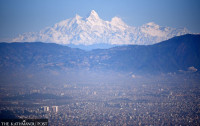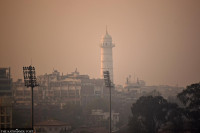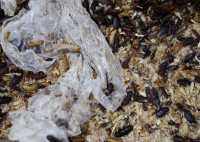Climate & Environment
Costs of dirty air will continue to grow as pollution levels rise
Various forms of pollution, through their human and economic costs, constrain Nepal’s development, a World Bank report says..jpg&w=900&height=601)
Chandan Kumar Mandal
Air pollution will put a bigger dent in state coffers in future as the cost of dirty air will swell further by 2030 if the pollution levels persistently rise at current rates, according to a World Bank report.
The report, released in Kathmandu on Thursday, estimated that the cost of air pollution for Nepal would grow between $136 and $256 million in 2030, a rise from nearly $130milion in 2015.
According to the report titled ‘Nepal Environment Sector Diagonistic: Path to Sustainable Growth under Federalism’, which is a comprehensive environmental analysis of the country, pollution in its various forms ‘constrains Nepal’s development through its human and economic costs’.
Air pollution has emerged as one of the leading environmental challenges for the country in recent years. Air quality has dropped many times below the prescribed standards as the country and its Capital continue to be ranked among the most polluted areas in the world.
“The level of ambient air pollution seems seasonal. Pollution level also varies across the country,” said Tijen Arin, team leader of the research and senior environmental economist with the World Bank. “Transport, household biofuel consumption, construction sector and brick kilns are the biggest sources of air pollution in Kathmandu Valley. However, household biofuel usage leads as the major source of air pollution across the country.”
The report states that air pollution levels are high and growing across the country in varied proportions. The average annual outdoor concentrations of fine particulate matter PM2.5, which is less than 2.5 microns thick and among the most dangerous of air particles, have reached 50 to 80 micrograms per cubic metre (μg/m3), way above the WHO guidelines of 10 μg/m3, according to the report.
The report stresses that the country’s environment and natural resources are facing adverse impacts of illegal mining of riverbed materials, presence of toxic metals, and solid and hazardous wastes in the environment, linked with the country’s unhealthy development approach.
“Nepal Environment Sector Diagnostic is a landmark document that has assessed and analysed major challenges and opportunities of sustainable management of natural resources with a diagnosis of environmental degradation,” said Shakti Bahadur Basnet, the minister for forests and environment.
The report has projected that the annual mortality burden from various pollutions is estimated to be at least 33,500, which is even higher than the toll of the devastating 2015 earthquake, with the highest proportion of deaths attributed to air pollution.
Although the country has made remarkable improvements in the water, sanitation and hygiene (WASH) sector, nearly 11 percent of pollution level deaths are still because of inadequate access to WASH. By 2030, the overall pollution-caused deaths are expected to be around 23,800 if the current rate of pollution continues and as lower as 8,800 if Sustainable Development Goals’ pollution targets are achieved.
The report points out flaws in the country’s environmental impact assessment process, which, it says, are of low quality and generic thus ineffective in mitigating risks.
Better harnessing natural resources for sustainable growth, mitigating adverse impacts of growth on the environment and natural resources and improving growth under federalism are the main recommendations laid out by the diagnostic report.
Nepal’s federal set-up, adopted with the 2015 constitution, provides an opportunity for the state to shift the country’s natural resource management from the protection-focused approach to the one that promotes harnessing resources sustainably in line with the country’s vision of prosperity, the report concludes.
For instance, combating the poor air quality in Kathmandu Valley and other major cities with similar problems requires an air quality management plan and distinct roles of the institutions at the three tiers of government, the report suggests.
“Air pollution is the key concern of the country not only for the Valley residents but also for expatriates who visit Nepal as professionals and tourists,” said Biswa Nath Oli, secretary at the Ministry of Forests and Environment, stressing collaborative efforts to address environmental problems.




 16.12°C Kathmandu
16.12°C Kathmandu










